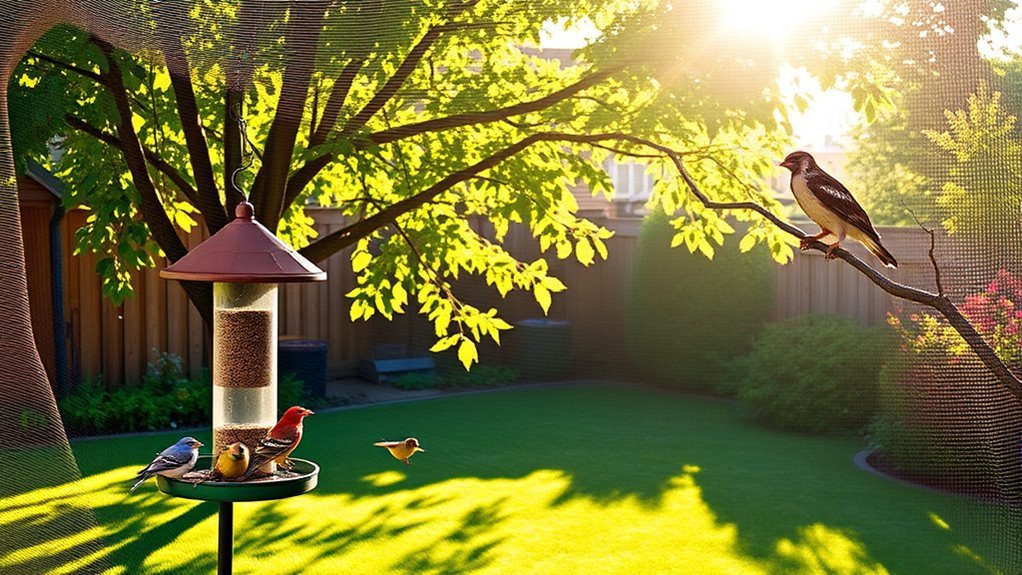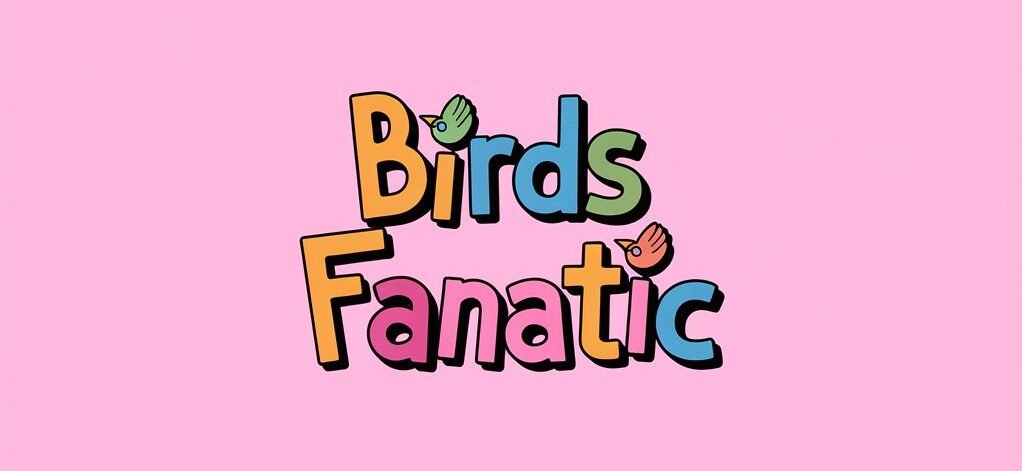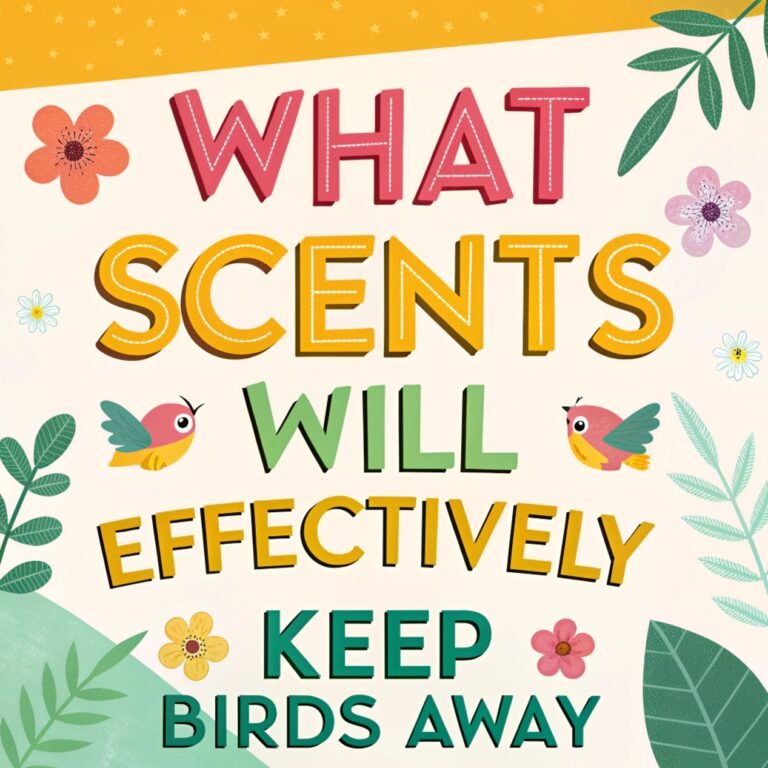Best Methods to Deter Hawks From Your Bird Feeders
If you want to protect your bird feeders from hawks, it's important to use effective strategies. Start by covering your feeders for extra protection. Consider where you place your feeders, as this affects their safety. The type of perches you add can also help keep smaller birds safe. Additionally, using visual deterrents can discourage hawks from approaching. Combining these methods will help you attract smaller birds while reducing the risk of hawk attacks.
Key Takeaways
- Use protective nets or feeder enclosures to prevent hawks from accessing birds while allowing them to feed safely.
- Place feeders 5 to 10 feet high and near dense shrubs or trees for optimal protection and visibility.
- Implement visual deterrents like plastic owls and reflective surfaces to disrupt the hawk's hunting environment.
- Install bird-friendly perches close to feeders to support safe feeding and quick escape routes.
- Provide dense shrubs and hanging covers to create safe hiding spots for smaller birds near feeders.
Utilize Protective Covering for Feeders

To keep hawks away from your bird feeders, use protective coverings. One effective solution is a protective net. This net creates a barrier that doesn't block birds from getting to their food. It helps stop hawks from diving down to catch birds, allowing your backyard birds to eat safely.
Another option is to build or buy feeder enclosures. These enclosures surround the feeders and protect them from aerial predators. They let smaller birds enter and exit freely while keeping the hawks out.
Choose the Right Feeder Location
Choose the Right Feeder Location
Selecting the right spot for your bird feeders is important, especially to keep hawks away. Place feeders between 5 to 10 feet high. This height makes it difficult for hawks to approach unnoticed.
The plants around the feeders matter too. Position feeders near thick shrubs or trees. These spots give birds protection from predators. When birds have shelter, they can spot dangers earlier.
When birds feel safe, they visit feeders more often. Think about how to balance clear visibility for birds while also keeping them safe in this location.
Implement Visual Deterrents

Creating a safe space for birds around feeders involves more than proper placement. Visual deterrents, such as scare devices and reflective surfaces, can significantly reduce hawk predation.
Scare devices, like plastic owls or shiny streamers, can make hawks hesitate before approaching. Reflective surfaces, such as CD discs or aluminum foil, can disrupt the hunting environment and catch the hawk's eye.
Positioning these items around your feeders helps protect your birds and provides them with a sense of security. These solutions can also enhance your garden's appearance, allowing the birds you love to feel safe and thrive.
Install Bird-Friendly Perches
Installing bird-friendly perches improves the safety of birds at feeders. Choose non-slip, durable materials like wood or textured metal for perches. These materials help birds maintain their balance.
Make sure perches are sturdy and large enough for multiple birds to sit together. Position the perches close to the feeding area. This allows birds easy access to food and a quick escape from predators like hawks.
Thoughtful perch design can create a welcoming space for birds, encouraging frequent visits to your feeders. A safe perch can significantly enhance the feeding experience for birds in your yard.
Provide Safe Hiding Spots for Smaller Birds

Birds need safe places to hide while they eat, making it important to provide cover around feeders.
Plant dense shrubs near your feeders to create a secure environment for smaller birds. These shrubs allow birds to quickly escape from potential threats without being seen. Choose native plants that offer both shelter and food, supporting a natural habitat.
You can also add hanging covers, like mesh or leafy structures, to give birds extra protection.
Frequently Asked Questions
What Types of Birds Are Most Affected by Hawks at Feeders?
Small songbirds, such as finches and sparrows, are most affected by hawks at feeders. These birds attract hawks because they are easy targets. To keep these birds safe while they feed, take necessary precautions.
How Can I Tell if a Hawk Is Nearby?
You can tell if a hawk is nearby by observing the behavior of other birds. If smaller birds fly away quickly or become very quiet, this is a warning sign. Pay attention to any changes in the activity around you. Hawks are skilled hunters, so being alert can help you notice them.
Do Specific Bird Feeders Attract More Hawks?
Yes, certain types of bird feeders can attract more hawks. Open feeders can bring many small birds, which may draw hawks looking for food. If you want to reduce hawk presence, consider using enclosed feeders. These feeders can still attract your favorite birds while keeping hawks away.
Are There Specific Times When Hawks Are Most Active?
Hawks are most active during dawn and dusk. These times align with their feeding habits. Knowing when hawks hunt can help you protect your bird feeders during these critical periods. This knowledge can enhance your bird-watching experience. By being aware of hawk activity, you can observe these birds in action while keeping your feeders safe.
Can Other Predators Besides Hawks Be Deterred by the Same Methods?
Many predator deterrents work well against various animals, not just hawks. By using these methods, you improve protection for your birds and create a safer environment in your backyard. This approach helps maintain a healthy ecosystem while keeping your birds safe from multiple threats.

Hello, I’m Amelia White, the founder of birdsfanatic.com. As a lifelong bird enthusiast and spiritual seeker, I’ve always been fascinated by the mystical connections between birds and the human experience. On this site, I share my knowledge and insights into the symbolic meanings and spiritual significance of various bird species, exploring their roles in mythology, folklore, and cultural traditions. Join me on this journey into the world of birds, where we’ll discover the hidden wisdom and guidance that these magnificent creatures have to offer.







